#zuniceratops
Text
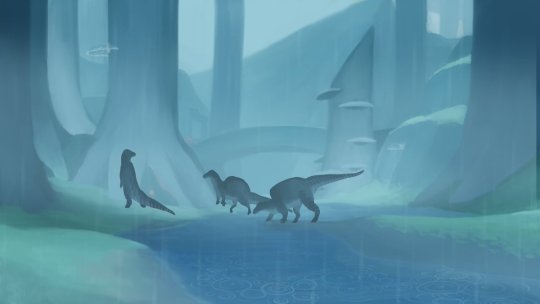

These were the first two “Sky but with dinosaurs” pieces that I did. It originally started as like environment practice. (2021)
Ouranosaurs (left) and Zuniceratops (right)
I’ll add these too, they aren’t really Sky related but we’re a part of the practice:




#sky cotl#sky children of the light#thatskygame#Dinosaur#ceratopsian#hadrosaur#Ouranosaurus#Zuniceratops#Sky but with dinosaurs#my art
239 notes
·
View notes
Text
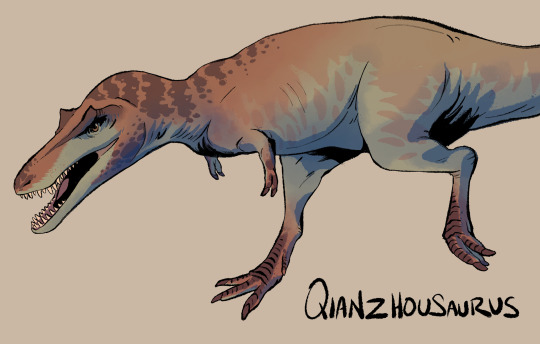



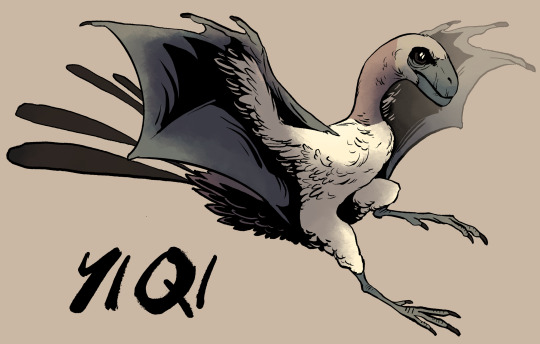
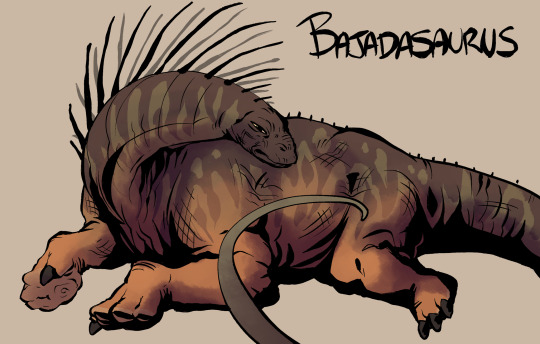

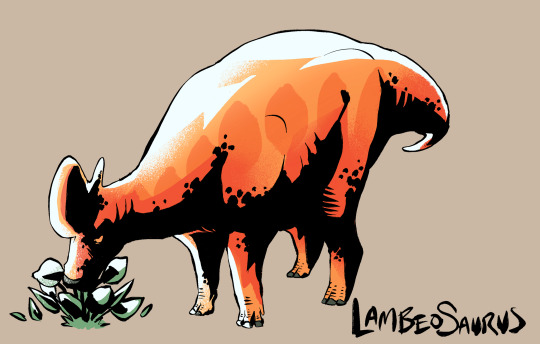


Dinocember 2023 Week 4+
#own art#digital art#dinosaur#dinocember#quianzhousaurus#miragaia#zuniceratops#dilophosaurus#yi qi#bajadasaurus#diabloceratops#lambeosaurus#megaraptor#ankylosaurus#prompts by savage mojo on da#got done a little early#this is the first month long art challenge I’ve ever finished yay#I had fun but I’m so ready to work on something else now lol
70 notes
·
View notes
Text
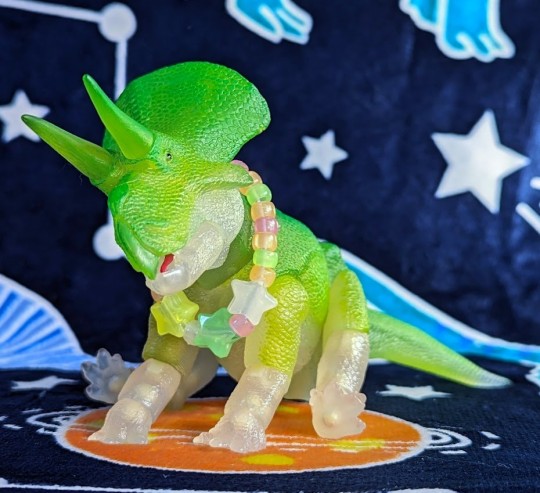
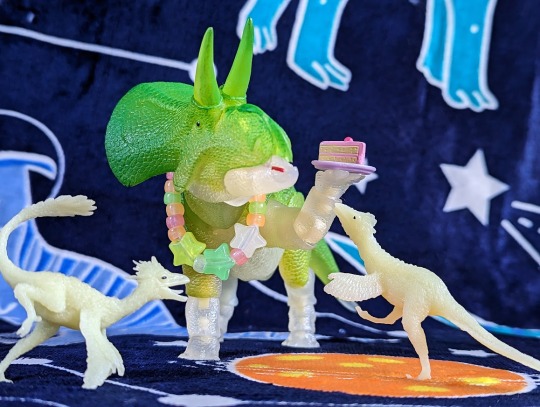

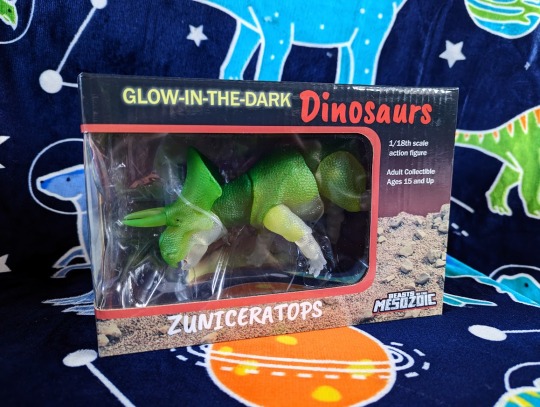
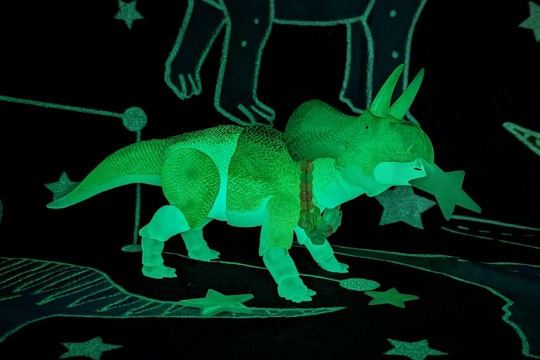
Zoom (they/it)
Glow-in-the-dark style Zuniceratops by Beasts of the Mesozoic (posed here with a few blind bag figures from the Walking With Dinosaurs movie), bought from Everything Dinosaur in February 2023.
#zuniceratops#dinosaur#prehistoric#beasts of the mesozoic#toys#plastic toy#action figure#not plushie#green#bright colour#glow in the dark#toy with accessories#zoom demonstrates how to avoid getting hunted
278 notes
·
View notes
Text

My Ceratopsians Collection is Slowly Growing in Anticipation for the New Habitat Defender Triceratops and I wish I didn't skip on the Protoceratops
#jurassic park#nasutoceratops#triceratops#zuniceratops#pentaceratops#styracosaurus#jurassic world#jurassic world fallen kingdom#einiosaurus#sinoceratops#jurassic world dominion#dinosaurs#ceratopsians#jurassic world mattel#jurassic park mattel#dinosaur toys#toy photography#paleontology#mattel#ceratopsian
102 notes
·
View notes
Text
Got inspired by @thylacines-toybox zuniceratops glow in the dark figure and decided to draw them! I found this particular pose very cute not to mention the necklace they gave them.

#dinosaur#dinosaurart#zuniceratops#beastsofmesozoic#cutedinosaurart#glowinthedark#dinosaurfigure#glowinthedarkzuniceratops#thylacines-toybox#digitalart
122 notes
·
View notes
Note
Trick or Treat, please and thank you! <3

Zuniceratops!
23 notes
·
View notes
Text
Massive Gondolend concept sketch dump
Hey look, it's my only artistic output that ever gets more than one or two notes: drawings of dinosaurs (and other animals)!


The whale-sized filter-feeding pliosaur Pelagititan melvillei (labeled here Aquatitan because I changed the name after I drew this), and the orca-sized mosasaur Zallingeria orak. These were drawn way back in 2002, before we had a better idea of what their tails were supposed to look like.

An updated orak that I started in 2016 and never got very far with because I hated it.
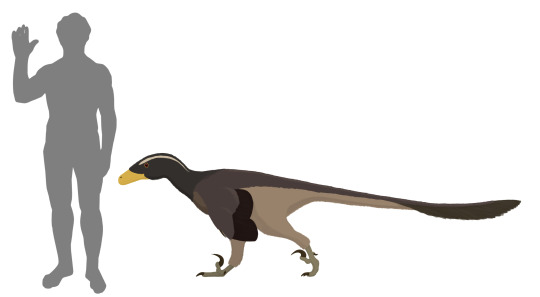
Deinonychus antirrhopus.
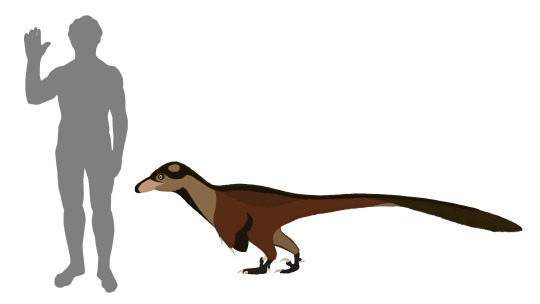
Yurgovuchia doellingi, which made an appearance in my short stories "The Hunter" and "The Prey."

Assultornis pteronyx, also known as the drop bird. This is a fictional dromaeosaurine found throughout the Democratic Republic of Samaraland that hunts by dropping down onto prey from above and then dragging its kill up into a tree to avoid getting it stolen by something bigger and meaner. One of these guys appears in my novella The Beasts of Kulig County, which barring any fuckups on my part I should start serializing online again in...November.

The wooly rinic, Cryonyx borealis, a fictional species of baryonychine originally native to Gondolend's frigid northern polar region, but which I have since retconned to be a southern polar animal instead. (I'll have to change that species name if I ever decide to do anything more with Gondolend beyond my current revisions.) While this drawing is relatively recent this is the first fake dinosaur I ever came up with for this project, and as you can see I went full Rule of Cool with the teeth. Which then led to...

...The horrormouth, Cryonyx phoboris. It took me years to actually draw this guy in the flesh; for the longest time it only existed as skull and skeletal reconstructions, which someone eventually tried to pass off as real on some random dinosaur battle forum.

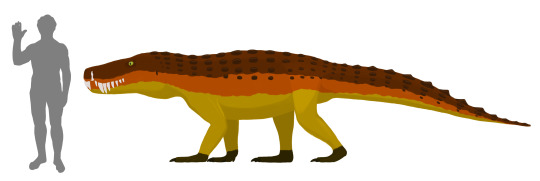
The elma'cho, Elmachosuchus gayi. This was a land-croc that I made as a reference to a gloriously stupid website that a friend of mine made and which is now gone.

I forget the scientific name for this guy, but it's commonly known as a crested dragon. It's a meter-long drepanosaur found in the Cassowary Valley, and makes an appearance in my novella Eleven Days in the Valley, which I'll be serializing on my website starting in September.
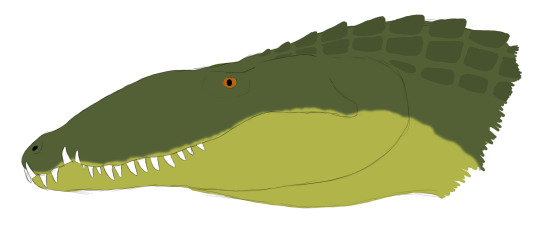
Domnosuchus, a giant land-croc native to the island of Yulan. This was the largest known species of land-croc, but it was quickly driven into extinction once humans settled the island.
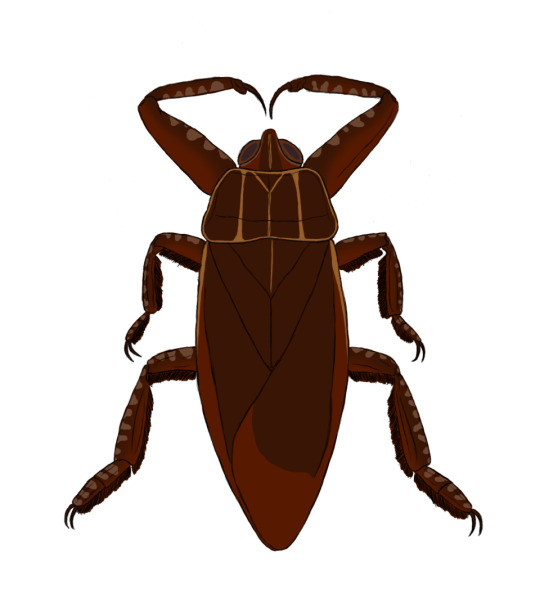
A giant water bug the size of your hand. The Isani consider them a delicacy.
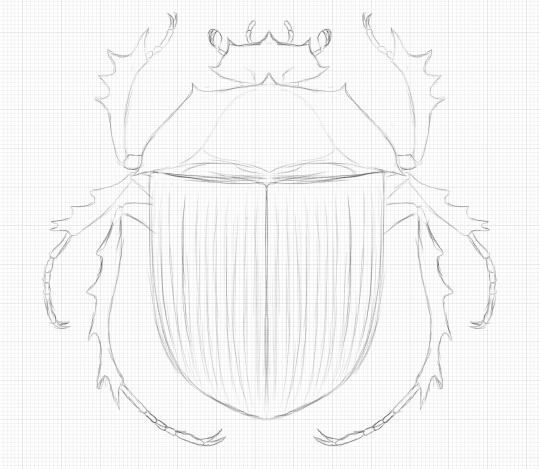
The gartum, a softball-sized dung beetle that cleans up sauropod shits on the Samara. Yes, its name is a reference to the garthim from The Dark Crystal.
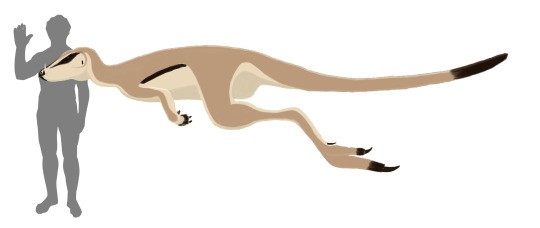
The giant hopper, Macropodotherium. This highly derived and infamously belligerent species of hypsilophodont is native to the island of Vona, but a feral population has become established in the Democratic Republic of Samaraland. These also show up in The Beasts of Kulig County. I also hate how this picture turned out and I can't fathom how I thought eschewing outlines was a good idea.



Two pterosaurs that appear in The Beasts of Kulig County, the tai (Istiodactylus) and the turu (Dsungaripterus). The tai is a full-time scavenger and generally non-aggressive, while the turu is a part-time scavenger and doesn't give a single fuck.
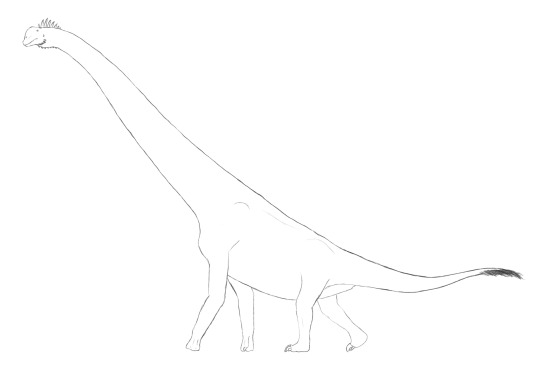
Giraffatitan, known in Samaraland as the twiga. One of these also appears in The Beasts of Kulig County.


Isisaurus, which in ancient times was used by the armies of Garacania as mobile battle platforms with archers (and, later, musketeers and then riflemen) on top.
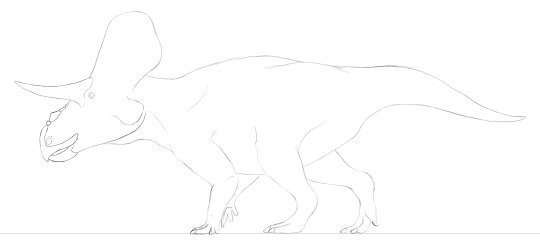
Zuniceratops, known in Garacania as the gergedat, was a popular cavalry mount. Famously, the legendary Garacani princess Denika Agares I led a gergedat cavalry into battle on many campaigns. (She also appears riding one in my short story "The Messenger.")

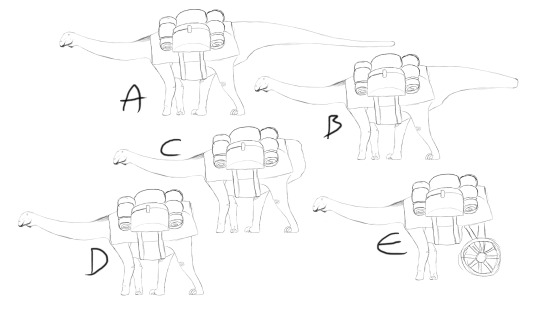
Nigersaurus was used as a beast of burden throughout Garacania (and presumably other neighboring areas), and domesticated specimens often had their tails docked at a young age to avoid them getting in the way and whapping people in crowded urban environments. The first two concepts in the second picture were serious, and the others...progressively less so.
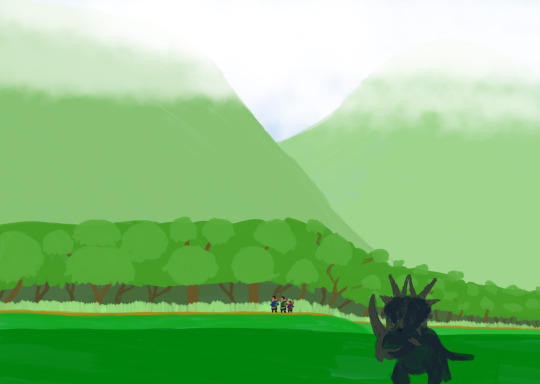
A very quick and dirty sketch of a scene in the Garacani territory of Ulaan Bok, showing several local Hahn Gar (an ethnic group inspired mainly by the Hmong) passing by as a Rubeosaurus grazes in the foreground.

An Isani boat, as seen in Eleven Days in the Valley.
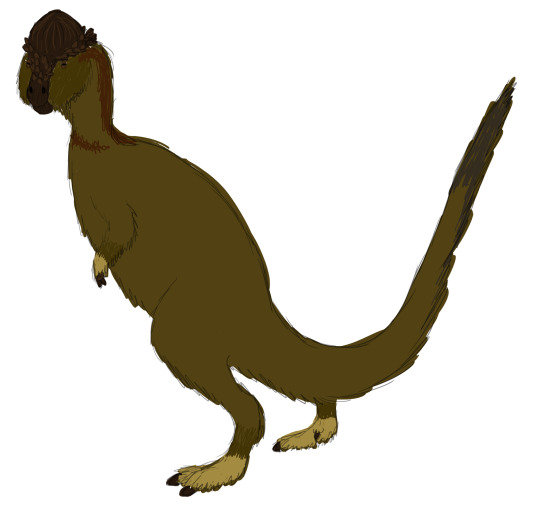
A pachycephalosaur.

I forget what I called this guy; it's a giant relative of the alligator snapping turtle native to the Cassowary Valley, where it spends most of its time on the riverbed waiting for prey to swim into its mouth. You can't see it here, but it has a very long neck.

A rough concept for a condor-sized alpine scansoriopterygid that never really went anywhere before I put my Gondolend project on indefinite hiatus.
...And that's it for now. Yeah, there's more. See you in part two, dickheads!
#gondolend#dinopunk#my art#dinosaurs#concept art#deinonychus#yurgovuchia#istiodactylus#dsungaripterus#giraffatitan#isisaurus#zuniceratops#rubeosaurus#pterosaurs#pliosauridae#mosasauridae#pachycephalosauridae#nigersaurus#speculative zoology#speculative biology#speculative evolution
7 notes
·
View notes
Text
Dinosaur Profile: Zuniceratops

Zuniceratops is a rather special ceratopsian. Despite not being as famous as some of its more famous relatives such as Triceratops or Styracosaurus, it played an important role in the evolution of ceratopsians. Particularly in North America, since they might provide an answer to an old question.
Background:
Zuniceratops christopheri ('Zuni-horned face') was found in the Moreno Hill Formation of New Mexico, America by Christopher James Wolfe in 1996. Dated to have lived around 93 to 91 million years ago during the Late Cretaceous, it's primarily known from the remains of 5 animals and a single skull.

As seen in the picture here, North America looked pretty different from the world today. A shallow interior sea effectively cut the continent in half. New Mexico was one of the states that was partially swamped by this interior sea. The areas that weren't covered by water became prime real estate for acres of coastal forests and swamps, all teeming with various species with flora.

Prehistoric New Mexico may have looked similar to this image from Borderland State Park from Massachusetts. With a diverse mix of ferns, honeysuckles, figs, and other types of vegetation to feed on, it would've been the perfect backdrop for various species of herbivorous dinosaur to thrive.
Evolutionary History:
Despite being native to North America, the ancestors of Zuniceratops actually hailed from Asia. It was believed that the first ceratopsians to have made the crossing over land bridges in the Bering Strait roughly during the mid Cretacous (112 to 100 million years ago to be precise), were relatively small. No larger than a rabbit. They were part of a lineage that was closely related to Psittacosaurus, a family that were bipedal and had only the faintest trace of a frill.

As you can see from the image by Brian Engh, they were far from the giants we would later know them as. The species shown here, Aquilops americanus, was believed to have been the first ceratopsian to make it to North America.
But they wouldn't stay small for long. When the land bridges were swallowed up by rising sea levels, the ceratopsians in prehistoric America began to balloon in size. The frills became more pronounced, and the first horns evolved. Which leads us to Zuniceratops.
Description:
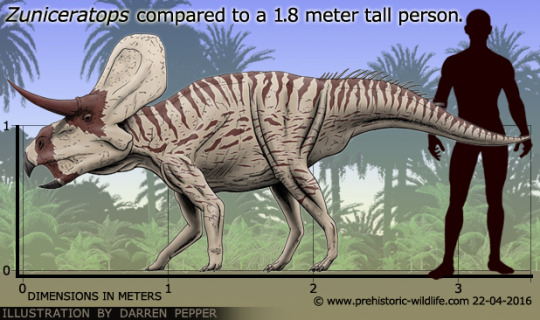
At 7.2 ft long and weighing in at least 175 kilograms by estimations, Zuniceratops was roughly the size of a cow. Fairly small by ceratopsian standards. But compared to its diminutive ancestors, it has evolved dramatically in both posture and headgear. The frill itself and horns are fairly mundane compared to later species, having two horns above each eye without a nasal horn. This bares a striking resemblance to the later Chasmosaurs, Triceratops in particular.
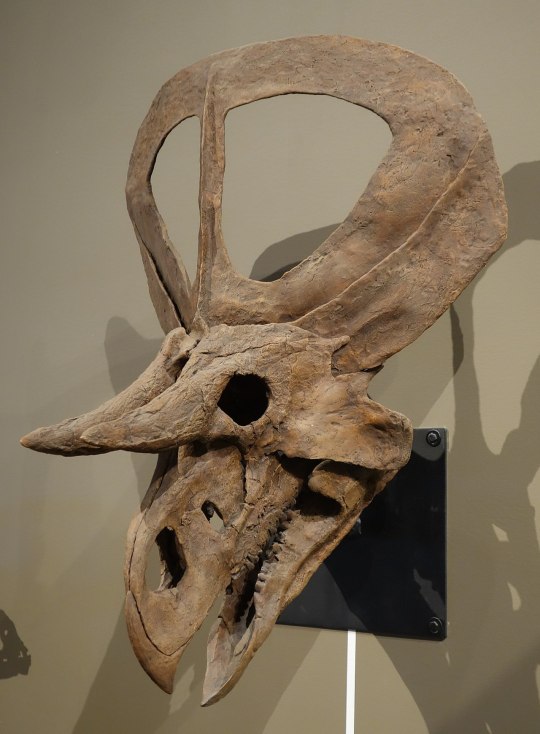
The frill has become significantly more developed. As you can see in this photo of a reconstructed skull, the frill had gaping holes in it to lighten the load. This would've made it less dense than the later Chasmosaur frills (such as Triceratops) and more in line with typical Centrosaur frills (like Styracosaurus). In order to further handle the increased weight, Zuniceratops is a strict quadruped with all four legs supporting it.
What exactly the frill was used for is unclear. The most popular theory nowadays was that males used it to court females during the mating season. Like dear and other herbivores today, healthier and stronger males may have more developed frills and thus would be more successful at both attracting mates and warding off rivals. Due to the frill's lack of density, head to head battles like in later Chasmosaurs may have been a rarity to avoid injury. But this doesn't discount the possibility if two rivals aren't able to get the other to back down.

The reasoning must've been worth the trade-off for speed. For prehistoric New Mexico had a predator called Suskityrannus: a primitive tyrannosauroid. While believed to have been significantly smaller and lighter (the only specimen known is believed to have been a juvenile), it would've posed a threat to Zuniceratops juveniles and weaker animals, such as elderly, injured, or ill. Especially if Suskityrannus hunted in gangs like wolves. Zuniceratops would still be an imposing prey item: their great bulk and sharp horns (quite similar to the more combat oriented Chasmosaur horns down the line) may have been an effective deterrent to predators. Additionally, Zuniceratops may have congregated in herds for further protection, similar to more advanced ceratopsians.
What it does retain is the sharp beak that evolved with its ancestors. Perfect for snapping up ferns and low-lying plant species, allowing it to peacefully coexist with other herbivorous dinosaur species, including the bizarre therizinosaur Nothronychus, which probably used its long neck to feed up in the trees.
North American Forerunner:

While the ancestors of Ceratopsians undoubtedly originated from Asia, there has been debate on where proper Ceratopsians (of Ceratopsidae as opposed to the various other families) themselves originated from. Specifically, whether the more advanced Ceratopsians came from Asia and migrated to North America, or evolved in North America.
Zuniceratops may provide an answer. Asone of known basal Ceratopsians in the world (of 1996) that shows many similarities with more advanced, it's been used by many as proof that ceratopsians originated in North America. Advanced Asian species may have migrated to Asia from North America via land bridges, similar to how Asian Pleistocene megafauna (and humans) migrated over a land bridge in the Bering Strait.
Though in recent years, this hypothesis has come under scrutiny with the discovery of the closely related Turanoceratops. Also around dated to 90 million years old, Turanoceratops is an Asian species. With both species closely related, it has raised the possibility that basal Ceratopsians actually hailed from Asia and migrated to North America.
Regardless of whether or not it represents the continent where the more iconic Ceratopsians originated from, Zuniceratops still remains as the oldest known basal Ceratopsoid in North America.
Pop Culture:

Due to its somewhat plain appearance compared to later Ceratopsians, Zuniceratops has a very minimal presence in the wider community. It did however make a starring appearance in a segment of When Dinosaurs Roamed America, where it was depicted as living in herds, competing for females, fending off an unidentified species of Dromaeosaur, and escaping a forest fire.

It also appeared in the 18th wave of cards for the collectible trading card arcade game Dinosaur King. It is depicted as a Lightning-type dinosaur, similar to the rest of its kind depicted in-game.
Sources:
Zuniceratops (prehistoric-wildlife.com)
Ancient fossilized turtle unearthed in New Mexico - UPI.com
Discovering Aquilops Americanus – Sam Noble Museum (ou.edu)
Small T. rex Relative Found in New Mexico: Suskityrannus hazelae | Paleontology | Sci-News.com
▷ ZUNICERATOPS, the dinosaur with horns over its eyes | Dinosaurs (yourdinosaurs.com)
Turanoceratops (prehistoric-wildlife.com)
#zuniceratops#ceratopsoid#ceratopsian#long post#dinosaur#dinosaurs#when dinosaurs roamed america#dinosaur king#not an expert so feel free to correct me on this#also not sure if this will be a recurring thing#and i swear this is not meant to rip off anyone
21 notes
·
View notes
Text
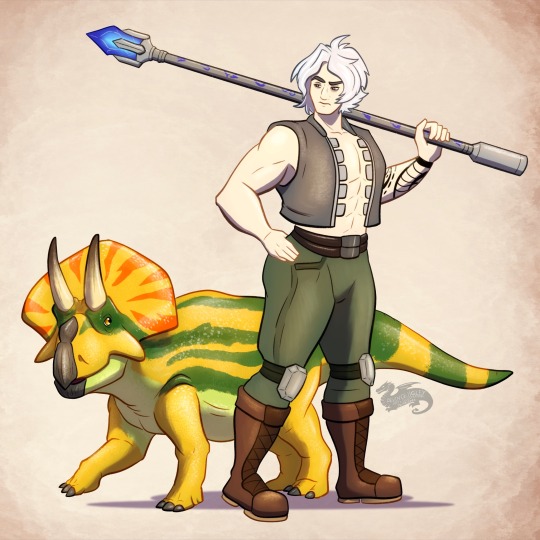
Commissioned Art for @chroniclerwabba of his characters Adum and his Zuniceratops Turo!
#characterdesign#illustration#art#artwork#digitalart#cartoon#drawing#creaturedesign#characterart#fantasyart#sketch#painting#procreate#dinosaur art#Zuniceratops#ceratopsian#artist on tumblr
14 notes
·
View notes
Text

Commission from Benjamin Michael Tanner / PaleoartStudios of Adum and Turo in his distinct style.
The old school Primal/Hannah-Barbera-esque aesthetic really suits the pulp feeling of the story.
BMT's Twitter
BMT's deviantart
#art#dinosaur planet adventures#dinosaurs#ceratopsian#adum#turo#zuniceratops#benjamin michael tanner#paleoartstudios#DPA
3 notes
·
View notes
Text
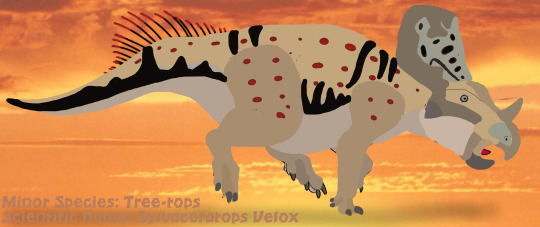
Sylvaceratops
Altura: 3.2 metros
Longitud: 9.6 metros
Peso: 1.4 toneladas
Primer Avistamiento: Isla Calavera [Tierra: Teratoverso]
Guarida: Isla Calavera [Tierra:Teratoverso] Monte Makapu [Avatarverso]
Aspecto: Zuniceratops + Brachyceratops
Aliados:
Humanos: Aang, Katara, Soka, Iroh, Zuko, Toph
Kaijus y otras bestias: Godzilla, King Kong, Mothra, Rodan, Anguirus
Enemigos:
Humanos: Ozai y Azula
Kaijus y otras bestias: Kasai Rex
#avatar aang#avatar: the last airbender#avatarverse#kaiju#tokusatsu#toho#millennium era#king kong 2005#skull island#sylvaceratops#zuniceratops#brachyceratops
0 notes
Note
do you have a favorite herbi and carni dinosaur? (specific genus or family group)
Favourite carnivorous dinosaur is easy, Sinosauropteryx prima!
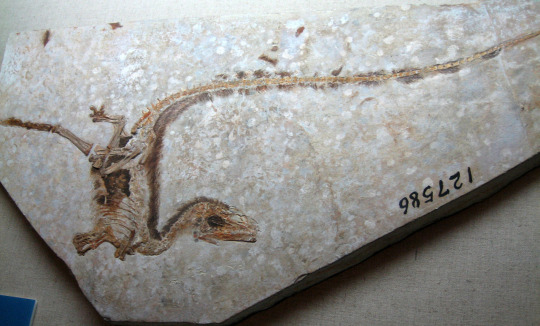
It's been my favourite dinosaur of all time for ages, because it represents such an incredible leap forward in our scientific understanding of dinosaurs! It was the first dinosaur described with fossilised feathers (that wasn't considered basically a bird already)!
If that wasn't enough, years later it's one of the only extinct dinosaurs whose colours are almost entirely known! It was an earthy red-brown, with white stripes on its tail and a black "bandit mask" on its face. So, basically an Early Cretaceous red panda.

(art by Gabriel Ugueto)
As for herbivorous dinosaurs, I don't really have a definitive favourite. There's such a huge variety of them, but personally I am always very fond of ceratopsians and sauropods, which I think are just absolutely beautiful creatures.
Out of the ceratopsians I love the chasmosaurini, with their enormous frills and horns and such, and am specifically very fond of Anchiceratops for its apparently weirdly long neck.

But there's a bunch of ceratopsians that I really love, like Pentaceratops, Einiosaurus, Zuniceratops, Udanoceratops, and Styracosaurus.
As for sauropods, the ones I love to see the most are titanosaurs because I find their long upward-sloping backs and necks especially graceful, and it amazes me that The Largest Animals ever walk on land also held themselves with such poise and elegance.

(Dreadnoughtus by Mark Witton)
One thing I notice going through my list of favourite dinosaurs, is how few of them I've actually drawn! Aside from Anchiceratops the art here isn't mine, and it's weird that I haven't drawn much of these guys who I find so beautiful to look at!
Also, feel free to add on to this with your own favourite dinosaurs! Can be carnivores, herbivores, omnivores, whatever!
250 notes
·
View notes
Text
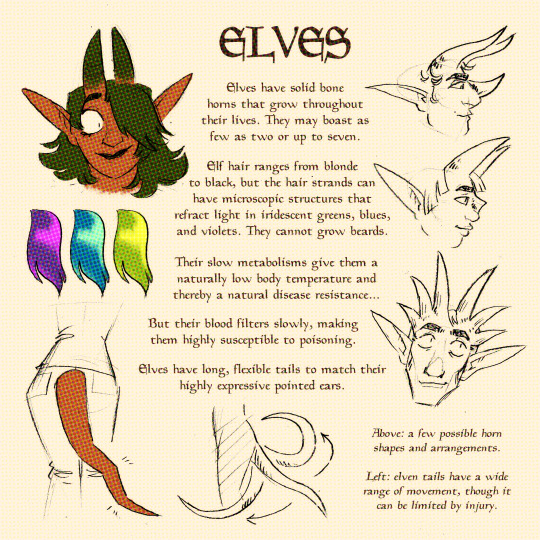

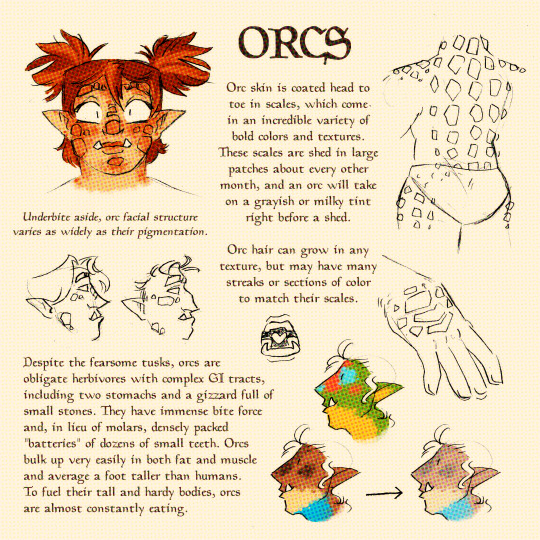
A quick and messy rundown of my own elves, dwarves, and orcs. I loathe the "planet of hats" bioessentialism of most fantasy races, as well as blatant coding meant to parallel human phenotypes via highly limited hairstyle and skintone selections, so I wanted to buck those trends in my own worldbuilding. These elves, dwarves, and orcs can each resemble any type of human in their face, body, and hair (aside from their more fantastical elements like scales and horns), and they have no single personality or culture, either.
You may notice a trend of dinosaurian features in these; that's no accident! In my own little high-fantasy world, the fauna is a melting pot of Paleozoic and Mesozoic species, from Anomalocaris to Zuniceratops. As there are no animals from beyond the K-T boundary, there were no apes (or other large mammals) for human(oid)s to evolve from. Therefore, as an exercise in highly speculative biology, the common ancestor of these sentient species was a member of Dinosauria that diverged very early on:
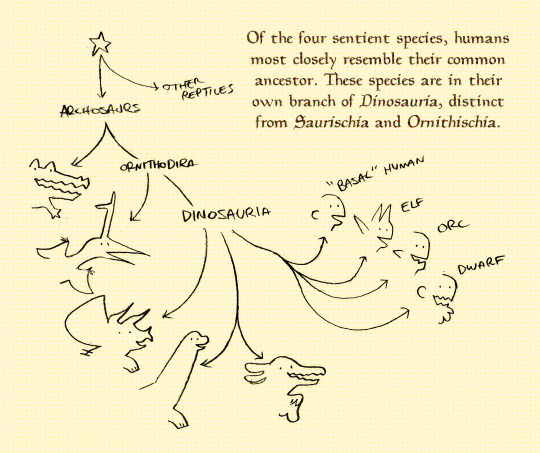
Jury's still out on whether or not that means humans, etc., lay eggs, but the odds aren't looking good...
#art#sketch#orig#worldbuilding#original fantasy#elf#orc#dwarf#monster girl#dinosaur#speculative biology#<- i'm using that term VERRRRRY LOOSELY LMAO
273 notes
·
View notes
Text
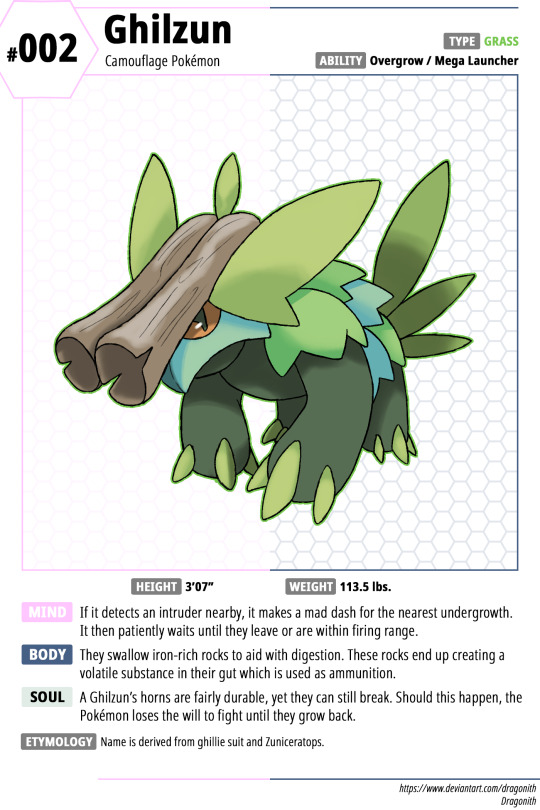
Sproutops evolves into Ghilzun! While Sproutops is based on a Psittacosaurus, Ghilzun is based on Zuniceratops.
Ref Sheet:

64 notes
·
View notes
Text

The Ceratopsians are Pretty Cool Dinos, just wish some are Bigger
#styracosaurus#zuniceratops#sinoceratops#nasutoceratops#pentaceratops#jurassic world fallen kingdom#dinosaurs#fallen kingdom#jurassic world evolution#jurassic world dominion#jurassic park#ceratopsian#ceratopsians#jurassic world mattel#jurassic park mattel#paleo#dinosaur toys#paleontology#mattel#toy photography
7 notes
·
View notes
Note
I see your Shark Faunus Jaune idea and I will raise you a Dinosaur Faunus Jaune. Now, what type of Dinosaur he is? Well, I'd probably root for something like perhaps a Stegosaur or Ceratopsian Faunus (Triceratops, Zuniceratops, Styracosauraus, or Pachyrhinosaur) but a Raptor or Therapod Faunus would also be a cool idea.
That's a cool idea, I like the thought of using dinosaurs, but the biggest reason I chose a Shark was originally for, well, a Dick Joke, because Sharks have two dicks (If that post gets found I'll link it in a reblog)
Afterwards in a reblog chain (Here) from @notmaplemable I made a similar joke, but @itsupermanti subverted that by making it a joke about his teeth.
I've ran with the teeth because I feel like it's just better than constant dick jokes.
I also really like sharks
I REALLY LIKE sharks.
I read an entire encyclopedia about Cartilaginous fish, which include Shark, Skates, Rays, and Chimera/SpookFish
Plus, like, Sharks haven't changed for like, ever, so they're Essentially dinosaurs. Even if they're fish and not Reptilian/Avian
55 notes
·
View notes